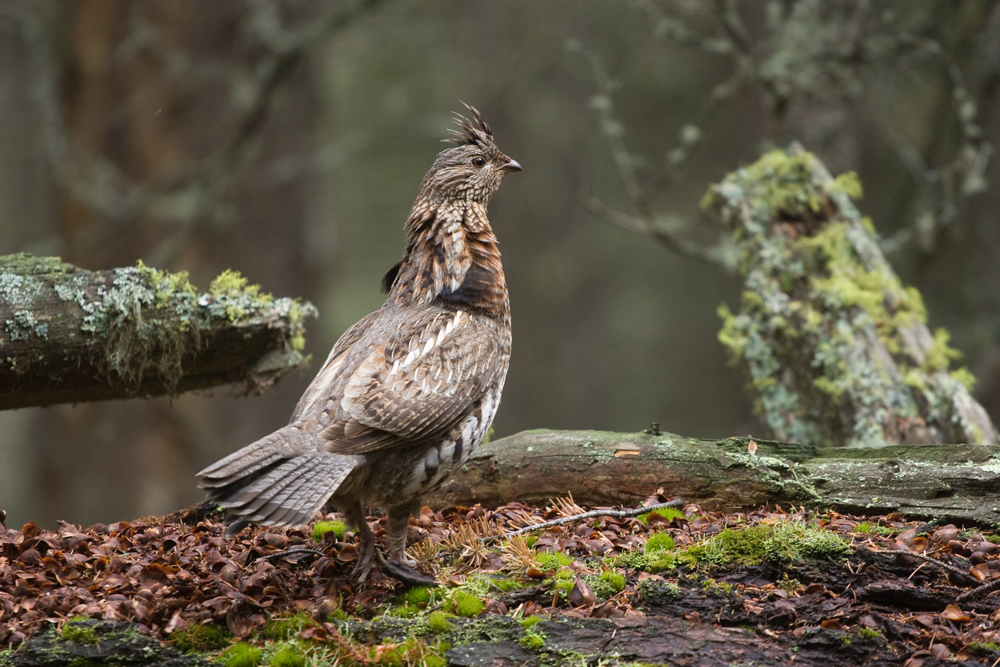We close our season at the end of February in the mountains of western North Carolina. By that time the warm winds of spring have often begun to blow, although March always seems to hold one last burst of snow. This year, with the early plants just peeking through, an April storm dropped over a foot of powder; it was gone a day or two later, of course, replaced by sun and 70 degrees.
I suppose we are fortunate to have a four-and-a-half-month grouse season. For the intervening seven and a half, however, we wait. These months are filled with spring turkey and flood-tide redfish in the Lowcountry; tailwater trout sipping sulphurs in East Tennessee and occasional trips to the islands in search of bonefish. These are, however, merely months of diversion. In mid-October we’ll take to the timber once more.
As I sit at the summit of this tediously climbed mountain, I think back on the six years I’ve had with Tucker, my liver-and-white Brittany. He’s in his prime, I say, and surely he has a few good years left, but I can’t shake the feeling he’s on the downswing. I know he would be put to shame by the high-dollar trial dogs that wear ribbons and make magazine covers, but he’s still a fine grouse dog. The rhythm we’ve developed, the fact that I can hunt for hours with hardly a word spoken to him, rings with a soft tinge of melancholy, like the second movement of a powerful symphony. There is more to come, and autumn’s colors will be bold and brash, but the hopeful hues of spring have passed.

(Illustration: Zane Porter)
What is left is the planning. We examine burn maps with a jeweler’s eye, making the unrealistic proclamations about spending a little less time in the usual spots. This season, we say, we’ll do more exploring. Like last season and the seasons before it, I know we’ll again return to the coverts that we know best, where Tucker learned this game and where I can recall nearly every flush with cinematic precision.
I think back to a late-season snow three winters ago when Tucker pointed a bird on the uphill side of a logging road carved into a steep hillside many decades before. The woods were quiet until one of the largest grouse I had ever seen erupted into the trees. A shot was placed into his breast as he turned toward the ridge, and the grouse crumpled and disappeared into thick brush. When Tucker didn’t return, I made my way toward the scene, finding nothing but a crater in the snow, a dozen feet of hurried tracks, and two wing sweeps in the unbroken snow. No feathers, no blood, and no bird. Sometimes I swear they are ghosts.

(Illustration: Zane Porter)
We’ll be back this fall to do it again, and I’ll pass the next few months with impatience and longing. Those are the days for which I wait. Those are the days when the leaves begin to fall from the trees, the cool winds begin to blow, and working dogs end their long spells of unemployment. Those are the good days.
Christian Fichtel is Store Manager with The Orvis Co. and a writer for Southern Culture on the Fly. He is an angler, a hunter, and a proud supporter of public lands.

